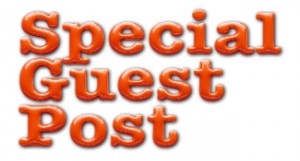 When searching for a team to work on our first NextBrief [link], I was hoping that C. Todd Lombardo (@iamctodd) might be able to work on the daunting task of thinking about the future of television. Happily, he was. And he was a perfect fit.
When searching for a team to work on our first NextBrief [link], I was hoping that C. Todd Lombardo (@iamctodd) might be able to work on the daunting task of thinking about the future of television. Happily, he was. And he was a perfect fit.
With over 15 years of experience creating change in the corporate world, C. Todd is an innovation chameleon, fitting into a number of different environments and excelling at navigating ambiguity. He often works on user experience (UX), communication, design or strategy projects in his role as Innovation Architect for small business software provider Constant Contact.
Since the Opportunity Canvas introduced in my first e-book [link] was a key part of the thinking process on the NextBrief, I asked C. Todd to comment here about what someone should do after completing the canvas stage of Nextsensing.
The Opportunity Foresensing canvas is an excellent thought process to help determine which direction your business may want to go. You end up with a set of data-driven hunches about what might be next in a critical area of interest for your company.
How can you take the next step toward acting upon those hunches?
 Where I work, in the InnoLoft at Constant Contact [link], we practice a similar method to test our ideas and hunches. We call it a Design Sprint. It starts with having some hypothesis/es to test. We then do a data exchange with a team focused on tackling this particular initiative. Once we have laid out all of our facts and assumptions, we determine if there are any gaps we need to fill in.
Where I work, in the InnoLoft at Constant Contact [link], we practice a similar method to test our ideas and hunches. We call it a Design Sprint. It starts with having some hypothesis/es to test. We then do a data exchange with a team focused on tackling this particular initiative. Once we have laid out all of our facts and assumptions, we determine if there are any gaps we need to fill in.
Then, in the drive towards a refinement of the hypothesis, we ask, “Do we have a problem worth solving for?” This involves getting out of the building to perform what we call Discovery Interviews, which are interviewing target users about their current habits, beliefs and/or attitudes about a particular area.
However, before jetting outside and asking questions of the first people you see on the street, some preparation is important.
First, identify the profile of the people you’d like to talk to. Has the canvas hinted toward any particulars, whether demographic (for example, 25-34 year old females with associate degrees and living in suburban areas) or psychographic (such as, technophiles with the latest gadgets and an influence in their social circles)?
Second, after distilling the profile, create a topic map of areas you’d like to further understand about their world. Break down each of your hunches from the canvas. Try to avoid specific questions and keep to topical areas. This can allow you to treat this information gathering in a discovery sense.
Armed with these two elements, you can then begin.
Often, more observation is in order. Before asking questions, see if you can just observe the behaviour of the profile person or group. If you’re able to see how people behave in the present, you may get a sense of the types of activities they may want to do or avoid in the future. When you begin interviewing, be mindful of your own biases and ask open-ended questions, ones that demand more than a yes-no response. Ask for stories related to your point of search.
Once you’ve collected your interview notes, bring them back and post them on a wall for other team members to examine. Look for patterns and quotes, and ask, “Why did they say that?” Do this frequently, and try to see if anyone on your team can think of an answer. (Again, there’s a need to be mindful of your own biases and misinterpreting someone’s answer to fit your hopes of being right about your hunches.) In our team, we specifically call out the assumptions we’re making and challenge each other to minimise any confirmation bias we may have.
Through all of this, you have to be okay with being wrong. Just keep examining the information you’ve obtained. How does what you have heard line up with your original hunch? Are there trends in the new information that indicate that you are heading in the right direction?
As with any good research, it’s important to be as certain as possible about the quality of your data before you start acting on it.
Stay tuned for my next post in which I’ll talk about what to do with the information you’ve gained since completing the Opportunity Canvas.

